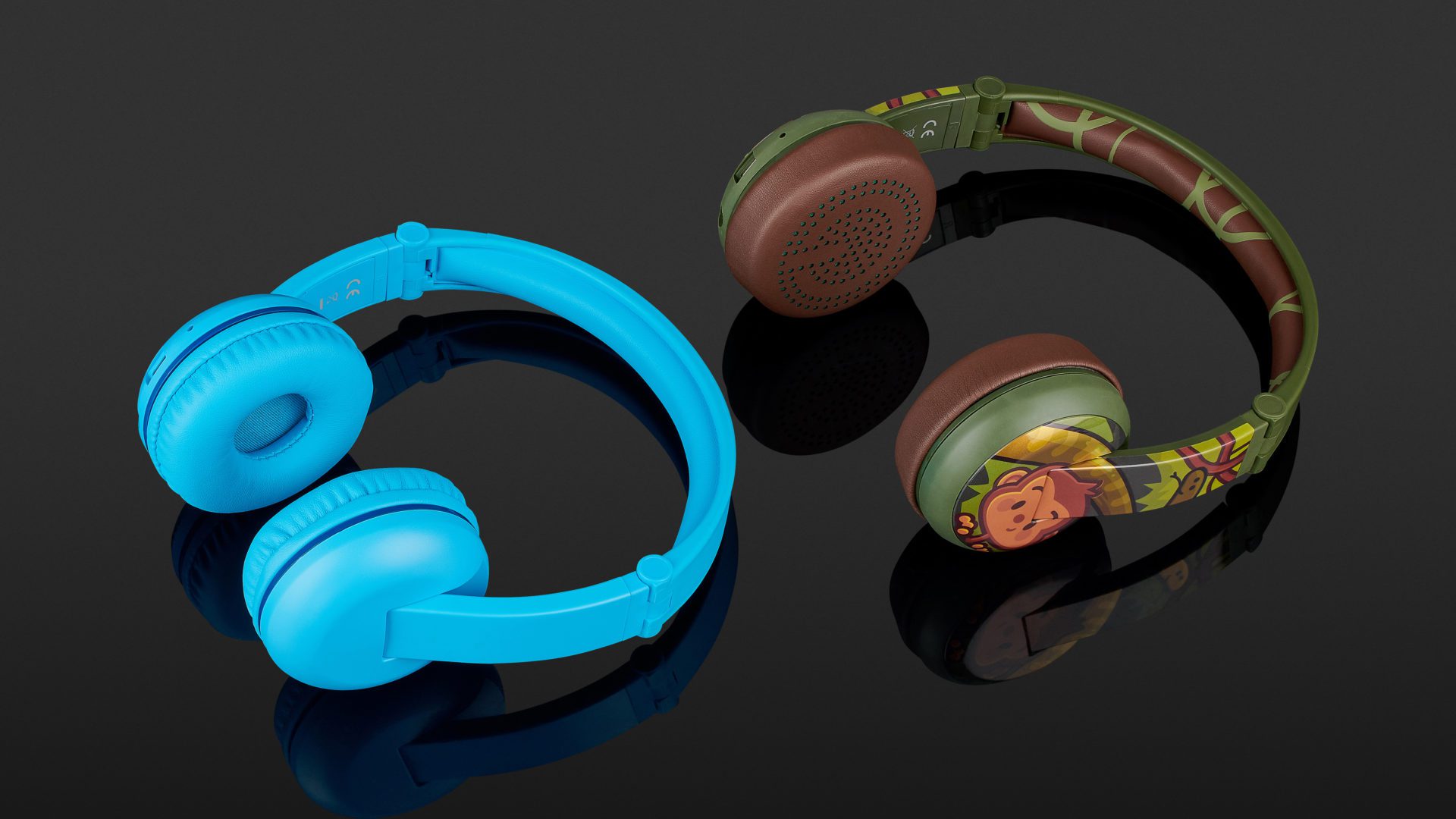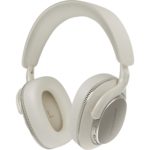The Play and Wave Buddyphones, like their wired siblings, are highly adaptable, appear robust and are easy to clean. They also offer a quality fit. Technically, both children’s headphones score well thanks to the support of Bluetooth 4.2 and a good range and a well-considered 3-button remote for iOS and Android systems. A long battery life can also be expected with both models, with 14 hours of operation for the Play model and over 20 hours for the heavier Wave version, which is also dustproof and waterproof. The Play model, however, offers an overall better quality of sound.
In addition to the wired models Standard, Explore and InFlight , Onanoff also offers two Bluetooth headphones designed especially for children in two variants: Play and Wave. These have a volume limit with four hearing modes which allow the devices to be adapted for hearing protection, depending on user age and listening environment. The Wave model is also dustproof and waterproof.
The Buddyphones are made of plastic and leave a robust first impression. As the bracket construction is not rigid, the headphones are flexible and adaptable. Nevertheless, the headphones offer a great degree of stability and a good fit, especially when you consider the extendable size adjustment function. The recommended minimum age for these headphones is three years, but these on-ears still offer a comfortable enough fit for adults with narrow heads.
In comparison to the wired models, Standard and Explore, the two wireless versions have padding on the inside that adds to overall wearing comfort. Like the InFlight headphones, they can also be folded for travel and stowed away in the carry bag that comes included with the main product.
Bluetooth Connection
The two Buddyphones, Play and Wave, support Bluetooth version 4.2 and were able to maintain trouble-free operation over a range of up to eight metres with various iOS and Android devices in the practical test. Therefore, they offer plenty of freedom of movement. Pairing is easy and can be done by holding the central button found on the right earpiece. This switches the headset on and puts it directly into pairing mode to establish a Bluetooth connection. This is then confirmed clearly by voice announcement.
Device Control
Three buttons and a microphone are integrated into the right earpiece of both wireless models, providing device control functions such as volume control, start/stop of playback, call answering and track selection. While the middle button controls the play/stop function of Android and iOS devices and is used to answer and end calls, the upper and lower buttons can be used to control the volume. In addition, the two buttons can also be used for track navigation by pressing and holding the upper button to jump forward and the lower button to jump back. The three buttons are easy to differentiate between, making things incredibly simple when controlling the device. Speech intelligibility also comes into play when telephoning, whereby the sound quality is not optimal, but rather dull instead.
Volume Limit
Play and Wave models offer a total of four different listening modes, which can be set using the upper and lower buttons on the right side of the headphones by pressing both buttons simultaneously. The 75dB mode offers the strongest level of limitation and therefore the highest level of hearing protection, making it particularly suitable for small children. The 85dB mode is recommended for slightly older children. For listening in noisy environments, the Travel mode allows for a maximum level of 94dB. Alternatively, a study mode is also available, which is intended to present the human voice particularly clearly. This also has a 94dB limit. Different LEDs on the headphone housing light up so you can see visually which listening mode has been activated. In this respect, it’s also easy to check whether the desired volume limit is being maintained by users.
Model Differences
The two models differ slightly when it comes to battery capacity. While the somewhat larger Play model provides a battery runtime of 14 hours after a full charge, the Wave headphones offer a more considerable 24 hours of runtime after a full charge. Alternatively, both models can also be used in wired mode, for which the Buddyphone cable familiar to users of the InFlight device is included. This cable features an audio splitter for shared listening and 1-button operation. However, it should be noted that different modes for volume limits can only be activated during Bluetooth operation. The limit for wired listening is set automatically at 94dB, which allows louder listening levels recommended for the hearing protection of much younger children.
Another difference is the IP67-certified processing of the Wave model. This offers improved protection against dust penetration and makes the headphones waterproof. This also makes cleaning much more simple.
Sound
Both Bluetooth models, like the wired Buddyphones, have a rather dull sound profile. However, the Play headphones sound more open and clearer than the Wave version, which I suspect may be down to the dustproof and waterproof finish. In this respect, it’s important to consider whether or not the emphasis should be placed on sound quality or overall durability. The existing study mode of both headphones lowers the bass range, which leads to a clearer sound. However, since the upper frequencies are also amplified in parallel, distortion is likely to occur. This tuning is therefore not suitable for listening to music, but the quality of spoken voice benefits.
Technical specifications
- Ear couplingOn-ear
- Typeclosed
- Transducer principledynamic
- Frequency response (headphones)20 - 20.000 Hz
- Impedance32 ohms
- Pressure averaged from big and small head350 g
- Weight with cable162 g
- Weight without cable150 g
- Cable length80 cm
What's in the box
- Cable with mini jack
- USB charging cable
- Different stickers
- Carrying pouch















































